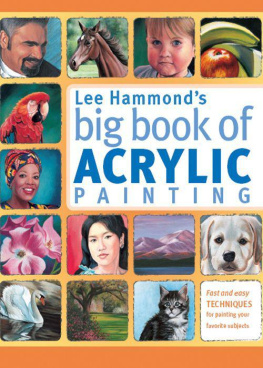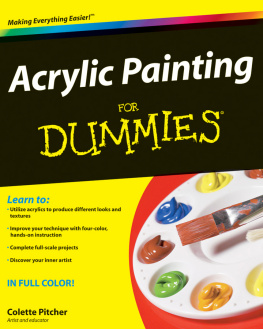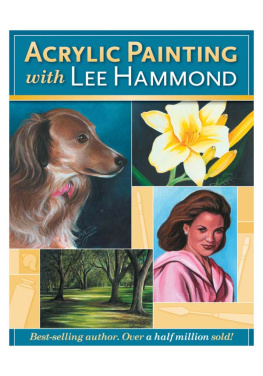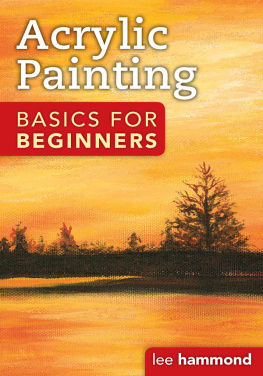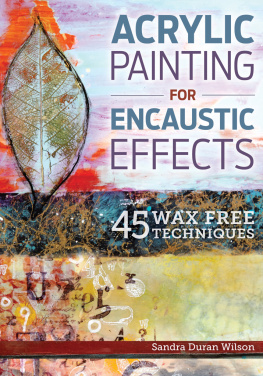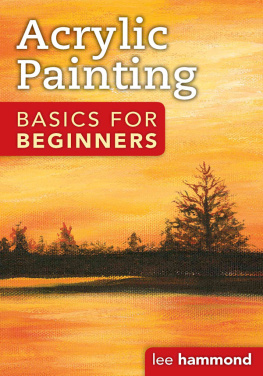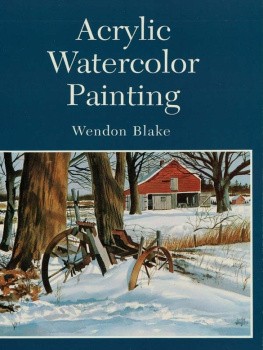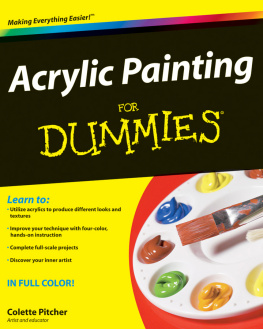Thank you for purchasing this Artist Network eBook.
Sign up for our newsletter and receive special offers, access to free content, and information on the latest new releases and must-have art resources! Plus, receive a coupon code to use on your first purchase from NorthLightShop.com for signing up.
or visit us online to sign up at
http://artistsnetwork.com/ebook-promo
Contents








Introduction
I have been writing art technique books for more than a decade. Some publications have dubbed me the Queen of Drawing. As flattering as that title is, I want people to know that I do more than just draw.
I love to paint, and the more I write about painting in acrylic, the more Ive come to love it. This medium is extremely versatile and user-friendly.
In this book youll find a collection of colorful projects designed to help you learn to paint with acrylics. The step-by-step projects will also give you a wide range of subject matterstill lifes, animals, people and landscapesto enjoy.
Some of the projects may look complex, but remember that painting with acrylic is all about painting in layers. Since acrylics dry rapidly, its easy to keep adding details or to cover up previous applications a little at a time. Youre never stuck when you work with acrylic paint; its a very forgiving medium.
Its also important to remember that every painting goes through what I call the awkward stage. The initial layers of a painting, applied when youre essentially creating a color map, will be sloppy, and the watered-down pigments will look weak. Dont become discouraged and stop too soon! By adding more layers and details with thicker paint, youll achieve the realistic look youre after.

Bowl of Fruit
9 12 (23cm 30cm)
P ATIENCE H AS I TS R EWARDS
This is an example of what you can do if you keep practicing. If you look closely, you will see places where colors are placed on top of other colors. After you have painted some of the projects in this book, you may want to come back to this painting and try to paint it yourself.

T HE A WKWARD S TAGE
This example shows the typical stopping point for most beginning acrylic painters. The paint looks watercolor-like, the colors look weak and the canvas shows through. However, this painting looks unfinished because it is. This important awkward stage is merely a color map for the more detailed layers to come.

Tiger Swallowtail on a Butterfly Bush
16 12 (41cm 30cm)
D ONT G IVE U P
This painting looks much more professional. Thicker, undiluted paint and layered details create a realistic look. The canvas now is totally covered, and the colors are much more vibrant. Everything comes together in the final stages of the painting. The effort is definitely worth it!
Getting Started:
Paints, Tools and Supplies
YOU DONT NEED A ROOM FULL OF SUPPLIES TO BEGIN PAINTING WITH acrylics. I use a very small number of colors on my palette and only a few different brushes. Keeping it simple makes me feel more relaxed in my work area.
A tackle box is a great place to keep your painting supplies. Its easy to carry with you when you want to paint on location, and it acts as a storage unit when youre not painting. Have fun creating your own custom acrylic painting kit! The materials youll need to do the exercises and demonstrations in this book are listed on this page.
Start-Up Kit
Below is a list of essentials you should have on hand to get you started on the painting projects in this book. Happy painting!
Paints: Prussian Blue, Ivory Black, Titanium White, Burnt Umber, Cadmium Yellow Medium, Cadmium Red Light, Cadmium Red Medium, Alizarin Crimson, Dioxazine Purple
Palette: A plastic palette with a lid is best.
Brushes: -inch (19mm) filbert, no. 3 filbert, no. 4 filbert, no. 6 filbert, no. 8 filbert, no. 3/0 liner, no. 2 liner, no. 1 liner, no. 2/0 liner, no. 2/0 round, no. 3/0 round, no. 1 round, no. 2 round, no. 4 round, no. 6 round, 3/4-inch (19 mm) sable or synthetic flat, 1-inch (25 mm) flat, no. 2 flat bristle, no. 6 flat, no. 4 flat, hake
Surfaces: Prestretched canvases, canvas panels and/or canvas sheets (Sizes are sometimes listed with individual exercises and demonstrations, but you can adjust to any size you wish.)
Other Materials: Cloth rags, wet wipes, cans or jars, spray bottle of water, palette knife, masking or drafting tape, mechanical pencil with 2B lead, ruler, kneaded eraser

P AINTS , T OOLS AND S UPPLIES
A simple set of tools and a limited palette of colors are all you need to start painting in acrylics. A tackle box makes a great storage unit.
What Is Acrylic Paint?
Acrylic paints are made of dry pigment in a liquid polymer binder, which is a form of acrylic plastic. Acrylics are water-based, so they require no paint thinners as oil paints do, though they can be diluted with water while painting.
Acrylic paint dries quickly to a waterproof finish. Because of its plastic, waterproof quality, it can be used on a variety of surfaces. Its a favorite for painting on windows, outdoor signs, walls and fabric. Its permanent, so items painted with it are washable.

